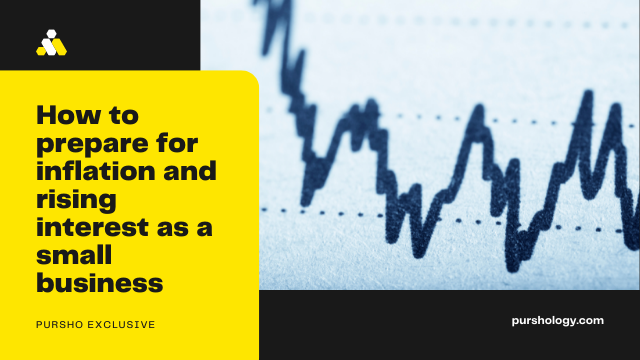For over a year now, inflation has been higher than its target rate in Australia. Since the turn of the year, inflation has shot up around the world – with almost 9% inflation in the US and much of Europe – and 5.1% in Australia. Whilst this is comparatively better, it still poses a threat to Australian businesses who are seeing their production costs rise, issues within the supply chain, and a fairly turbulent and uncertain economic environment.
Top 5 tips to protect your business from inflation
Below are 5 tips by SmallBusinessLoansAustralia on how to protect, or even take advantage of, inflation as a small business owner in Australia.
Raise your price or shrink your product
Ultimately, inflation is a blanket term for rising prices in an economy. You’re a seller, so does that mean you too should raise prices? Of course, the answer depends on your situation, but in most circumstances it only seems natural to. In theory, it’s good to know if your product/good is price elastic or inelastic in regards to demand.
If you think that your customers will react negatively to the rising prices and will result in a decrease in revenue, it may be best to opt for some shrinkflation. This really depends on the situation, but it seems that customers actually prefer shrinkflation in general. Maybe you could actually be upfront by asking some customers and gathering some feedback.
Investing in technology
One result of inflation is likely going to be an aggravated workforce that wants a pay rise in accordance with inflation – and understandably so. Whilst it’s rare that employees receive these (thus meaning the company actually benefits from inflation, as real wages decrease), it may be time to turn to other methods of production.
It may sound cruel but technology isn’t subject to inflation. Whilst prices of machines may rise and their subsequent maintenance costs, this pales in comparison to a 5%+ personnel pay rise across the board year on year. Whilst Australia’s inflation isn’t as bad as the US or UK, it could get worse. Being able to keep production costs static whilst increasing your prices could mean inflation actually increases the gross profits of your business.
Buy inventory + equipment and inspect your supply chain
If the price of a car you wanted to buy was going to increase tomorrow, why wait until tomorrow to buy it? Inflation isn’t slowing down anytime soon and your supply chain is almost certainly affected, not least because a lot of this inflation is being caused by commodities such as oil and gas, things that affect all prices because of rising costs in logistics and transport.
So if you have the capital required, it’s worth stocking up on any inventory and equipment that you need. Plus, if your supply chain becomes extremely disrupted in other ways, this will protect against that too. As a side note, inspecting the supply chain to see how affected it’ll be, and what your plan B is, could make a huge difference in anticipating issues.
All of this inventory also has scope to be sold for higher later than it is today, so the investment is already benefiting from inflation.
Reinvesting your profit and investments may seem like a high-risk strategy but it’s being wasted away in a bank account, where its real value is being eaten away by inflation. Inflation is a bit like a wave – you either stand still and be engulfed by it or you ride the wave. Just don’t change your capital structure or leverage this investment, as the tide can soon turn.
Keep an eye on economic news
It looks like interest rates will continue to rise among most of the major central banks around the world. Now, the advice of riding the wave needs to be taken with a grain of salt, because there’s still a need to be cautious here. It appears that some central banks are looking to purposefully ignite a recession in order to curb inflation.
This sort of news you need to stay on top of, because at some point interest rates could incentivize saving, hurt investment and borrowing, and cause a decrease in confidence among your customers and investors. Plus, any new trade agreements made (i.e. with post-Brexit UK) will be important to know about as they may open doors to new markets and suppliers.
Refinancing
The worst mistake you could make is to agree on a long-term debt that has a variable interest rate, because as we know interest rates are likely to rise in the future, meaning your repayments would also rise.
There is an argument that if you can lock in a fixed rate now, it will become a more preferable rate than you would receive in the future. However, as we have already discussed, leveraging more during an unstable time in the economy may not be a good idea, which is why versatile short-term loans have become so popular.
So, refinancing debt may be a good idea in order to lock in the current rates, but only debt that you feel must exist. Plus there’s always the benefit that debt decreases in real terms due to inflation (the other side of the coin that eats away at our savings deposits). So on paper, refinancing to lock in currently low-interest rates before they rise could actually be exploiting inflation to help reduce the debt burden over time – just don’t leave yourself in a debt-dependent position where you need to take out another loan in 2 years’ time, because they could become very pricey.




